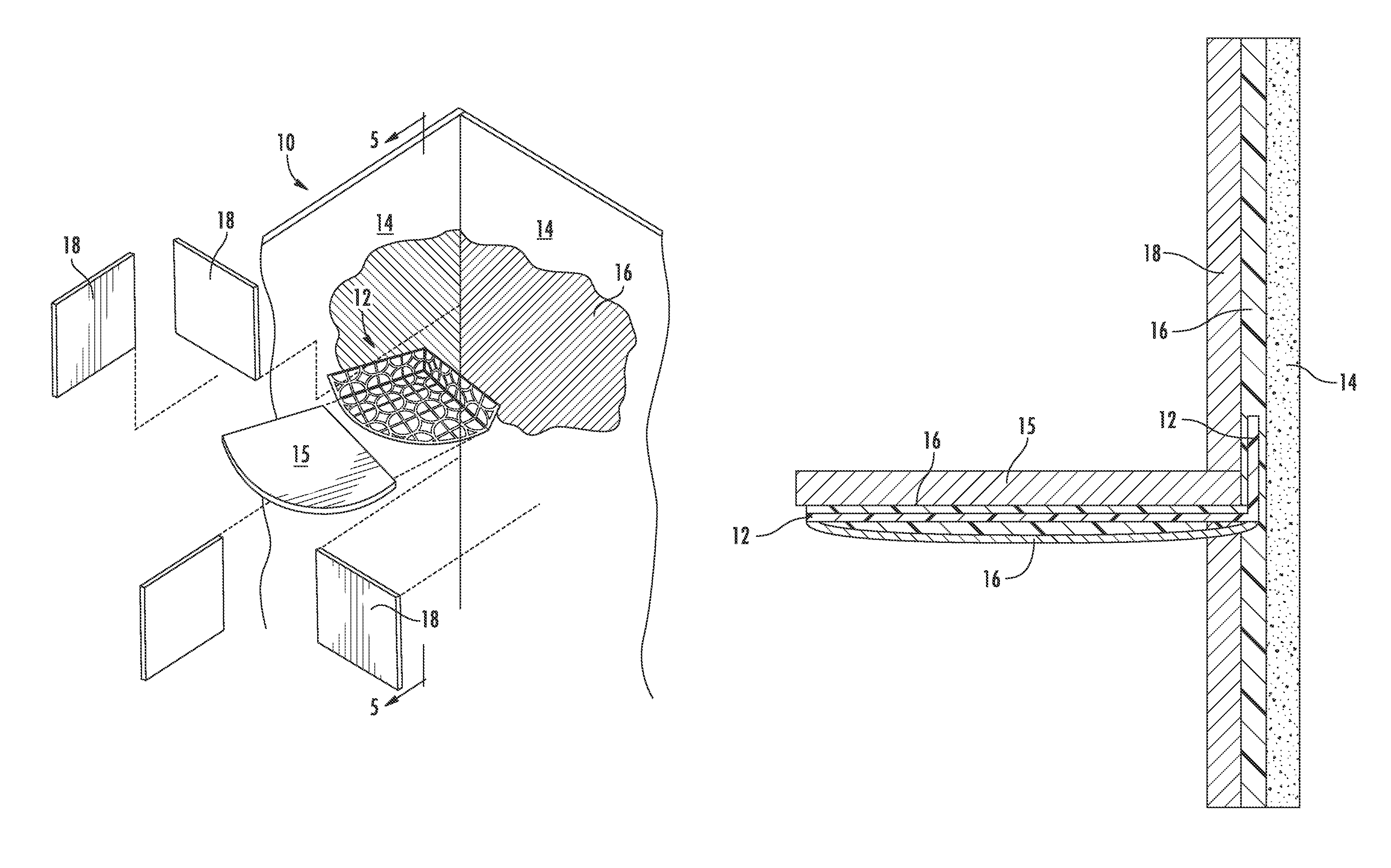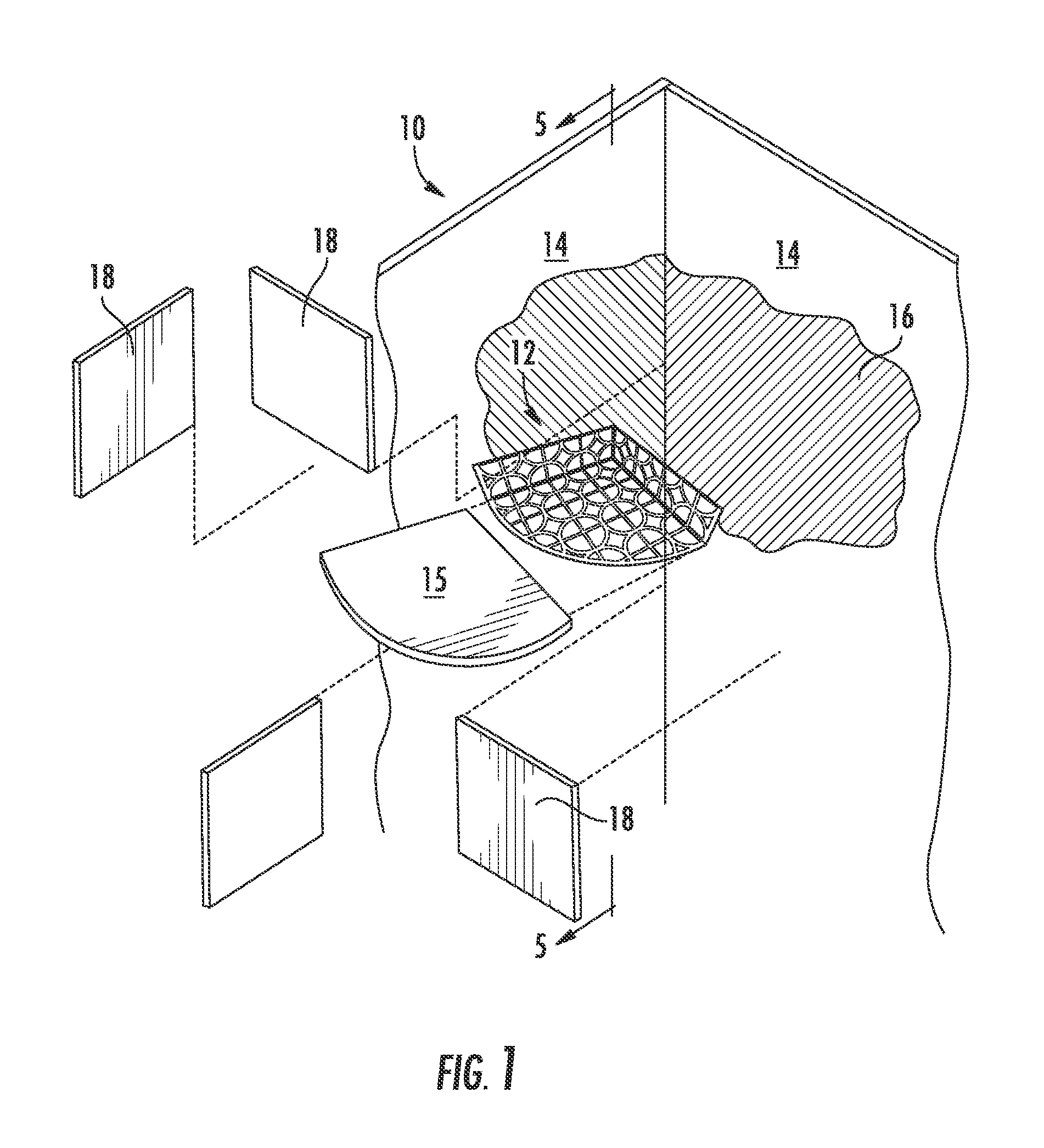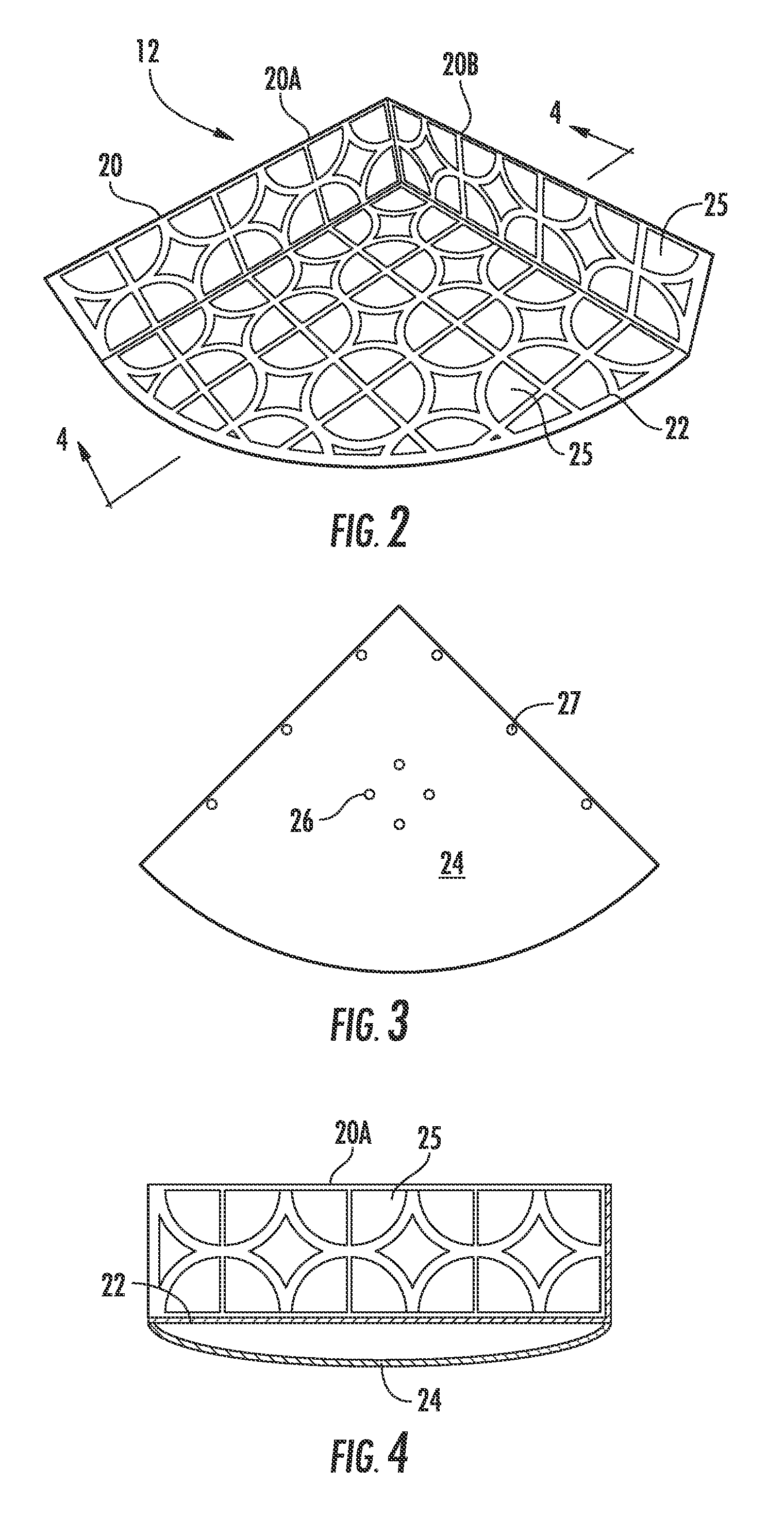Tiled structures and brackets therefor
a technology of tiled structures and brackets, which is applied in the direction of walls, coverings/linings, constructions, etc., can solve the problems of water infiltration into the wall, substantial risk of breakage or damage to tile veneers, and damage to the structure of substrates
- Summary
- Abstract
- Description
- Claims
- Application Information
AI Technical Summary
Benefits of technology
Problems solved by technology
Method used
Image
Examples
Embodiment Construction
[0028]Referring now to the accompanying drawings and initially to FIG. 1, a tiled wall structure, generally indicated overall at 10, is depicted in exploded form as constructed utilizing an embodiment of the bracket of the present invention, generally indicated that 12, for incorporating a corner seat accessory 15 into the wall structure 10. As is commonplace and well-known to persons of skill in the relevant art, the tiled wall structure 10 basically comprises an upstanding structural substrate 14 of a rigid but porous structural material, a layer of an adhesive mortar applied over the entire surface of the substrate but only representatively indicated at 16 over a portion of the substrate, and an array of decorative tiles adhered to the mortar 16 at uniform edge-spacings over the entire surface of the substrate, as represented by rectangular tiles 18.
[0029]The substrate 14 is of a conventional form typically fabricated of a series of boards or panels of uniform shape and size fixe...
PUM
 Login to View More
Login to View More Abstract
Description
Claims
Application Information
 Login to View More
Login to View More - R&D
- Intellectual Property
- Life Sciences
- Materials
- Tech Scout
- Unparalleled Data Quality
- Higher Quality Content
- 60% Fewer Hallucinations
Browse by: Latest US Patents, China's latest patents, Technical Efficacy Thesaurus, Application Domain, Technology Topic, Popular Technical Reports.
© 2025 PatSnap. All rights reserved.Legal|Privacy policy|Modern Slavery Act Transparency Statement|Sitemap|About US| Contact US: help@patsnap.com



